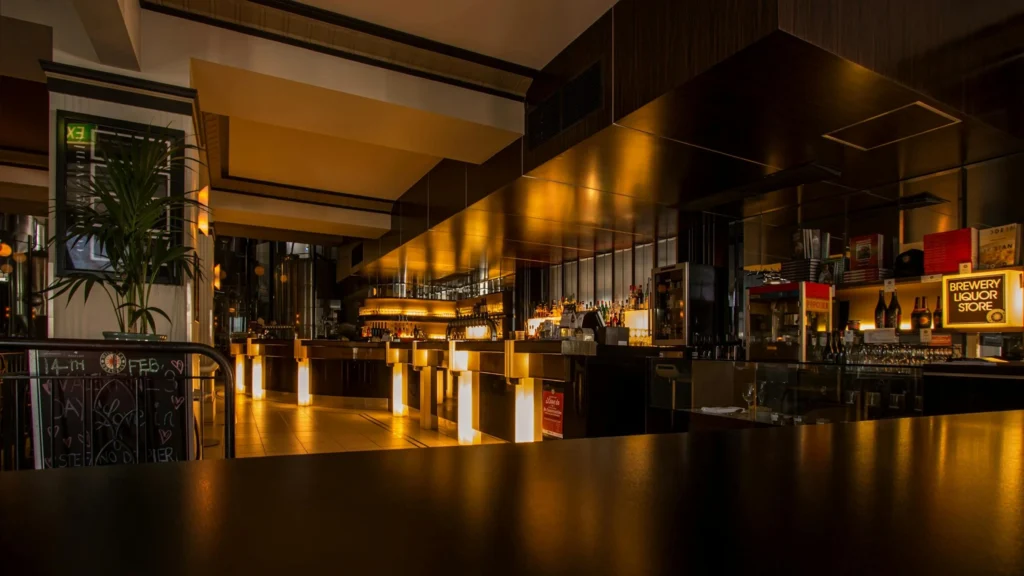Starting a restaurant from scratch is an exciting but daunting venture. Whether you’re passionate about food or inspired by the bustling energy of the dining scene, launching your own restaurant can be incredibly rewarding. This blog post is designed to guide aspiring restaurateurs through the essential steps of establishing and running a successful restaurant business. From planning and location selection to financing and marketing, we’ll cover all the crucial elements you need to consider. By the end of this post, you’ll have a comprehensive understanding of what it takes to turn your culinary dreams into a thriving reality.
One essential aspect of setting up a restaurant is ensuring your staff meets local health and safety regulations. For those operating in Texas, obtaining Texas food handler cards is a key requirement. This certification ensures your staff is well-prepared to handle food safely and maintain proper hygiene standards, contributing to the success of your restaurant.

Understanding Your Market and Concept
Before embarking on your restaurant journey, it’s crucial to understand your target market and develop a clear concept. Conduct thorough market research to identify potential customers’ demographics, preferences, and dining habits. This will help you tailor your menu, ambiance, and services to meet their needs. Define your restaurant concept by choosing a specific cuisine, theme, and dining style. Whether it’s fine dining, casual, or fast-casual, your concept should resonate with your target audience and set you apart from competitors.
Crafting a Business Plan
A well-structured business plan is the foundation of any successful restaurant. Outline your vision, mission, and goals to provide a clear direction for your business. Include detailed financial projections, such as startup costs, operating expenses, and revenue forecasts. Additionally, a marketing strategy should be part of your business plan. This will help you attract customers and build a loyal following. Your business plan will serve as a roadmap, guiding you through the initial stages and helping you secure funding from investors or banks.
Legal and Financial Considerations
Navigating the legal and financial landscape is critical to launching your restaurant without encountering unforeseen setbacks. Start by choosing the appropriate legal structure for your business, which could be a sole proprietorship, partnership, corporation, or limited liability company. For instance, if you are planning your restaurant in the UK, understanding the requirements for UK LLC registration is essential for protecting your personal assets and ensuring legal compliance. Familiarize yourself with local health and safety regulations, as well as food and beverage licensing requirements. Additionally, consider hiring a legal expert to assist with contracts, permits, and other legal documents. On the financial side, establish a robust accounting system to manage cash flow, taxes, and employee payroll. Implementing these practices early will provide a solid legal and financial foundation for your restaurant’s success.
Choosing the Perfect Location
The location of your restaurant plays a crucial role in its success. Choose a location that is easily accessible, visible, and has a high foot traffic volume. Consider the proximity to your target market and competitors. Conduct a thorough analysis of the area to ensure it aligns with your restaurant’s concept and target audience. Additionally, check local zoning regulations and lease terms before finalizing the location. A prime location can significantly impact your restaurant’s visibility and customer base.
Designing Your Restaurant
The design and ambiance of your restaurant contribute to the overall dining experience. Create a welcoming and aesthetically pleasing environment that reflects your restaurant’s concept. Pay attention to the layout, lighting, décor, and seating arrangement. Ensure that the design is functional and provides a comfortable dining experience for your customers. Collaborate with professional designers or architects to bring your vision to life. A well-designed restaurant can leave a lasting impression on your customers and encourage repeat visits.
Setting Up the Kitchen
The kitchen is the heart of any restaurant. Equip your kitchen with high-quality appliances and tools to ensure efficient food preparation and service. Hire experienced chefs and kitchen staff who can execute your menu flawlessly. Implement a well-organized kitchen layout to streamline operations and maintain hygiene standards. Additionally, establish a reliable supply chain for fresh ingredients. A well-equipped and efficiently managed kitchen is essential for delivering consistent and high-quality dishes to your customers.
Hiring and Training Staff
Your staff plays a vital role in creating a positive dining experience for your customers. Hire individuals who align with your restaurant’s values and vision. Provide comprehensive training to ensure they understand your standards and expectations. Focus on customer service, as friendly and attentive staff can enhance customer satisfaction. Implement a continuous training program to keep your staff updated on industry trends and best practices. A motivated and well-trained team will contribute to your restaurant’s success and reputation.
Creating a Menu
Your menu is a reflection of your restaurant’s concept and culinary expertise. Craft a menu that showcases a variety of dishes while maintaining a cohesive theme. Consider dietary preferences and trends to cater to a diverse customer base. Ensure that the menu items are priced appropriately to cover costs and generate profit. Regularly update your menu to keep it fresh and exciting for returning customers. A well-curated menu can entice customers and set you apart from competitors.
Marketing and Promotion
Effective marketing is essential for attracting customers and building brand awareness. Utilize various marketing channels, including social media, websites, and traditional advertising, to reach your target audience. Use presentation software to create engaging content that highlights your restaurant’s unique features and offerings. Collaborate with influencers or food bloggers to increase your restaurant’s visibility. Additionally, consider hosting events or promotions to draw in customers. Consistent and strategic marketing efforts will help you establish a strong presence in the market.
Starting a successful restaurant business from scratch requires careful planning, dedication, and a passion for hospitality. By understanding your market, crafting a solid business plan, and implementing effective strategies, you can turn your culinary dreams into reality. Remember to focus on creating a memorable dining experience for your customers and continuously strive for excellence. If you’re ready to take the first step towards your restaurant venture, we invite you to explore further resources and connect with industry experts. Your dream restaurant is just a few steps away.


